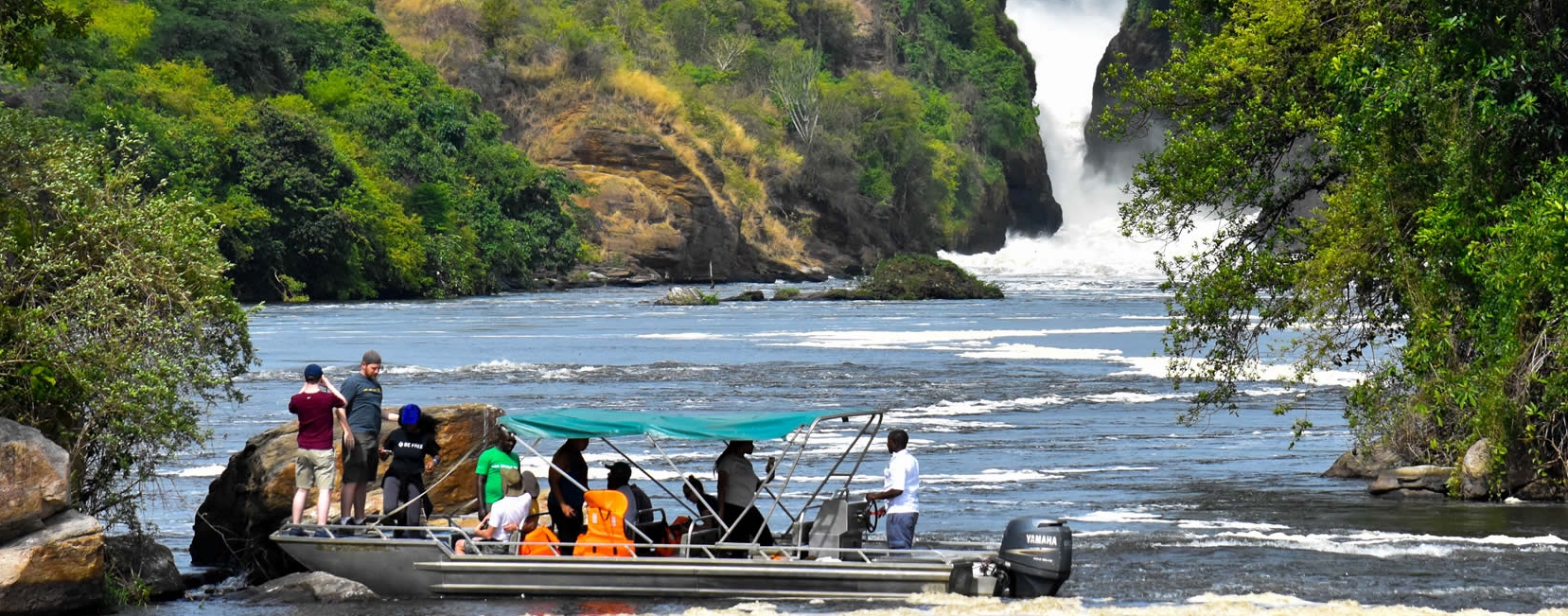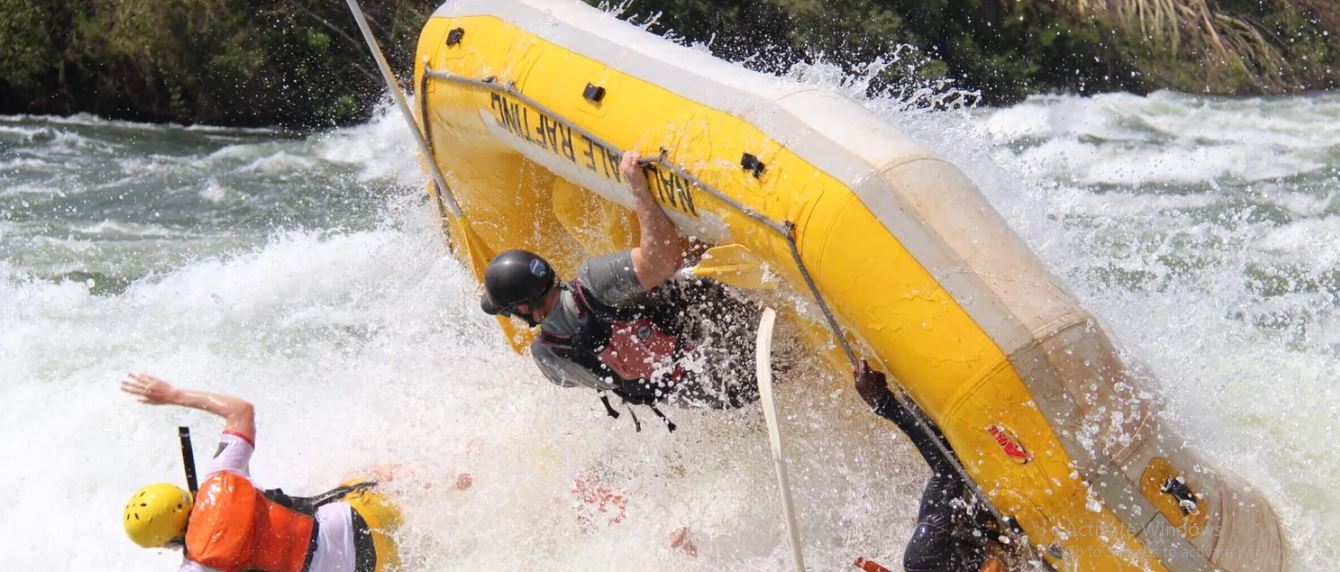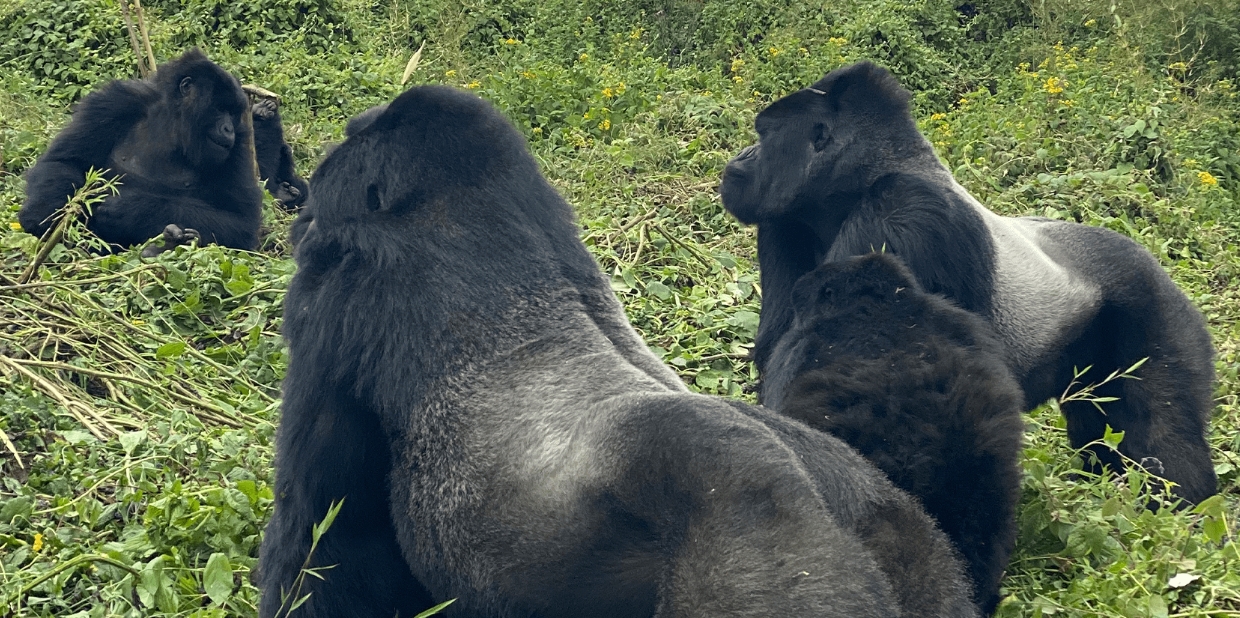
The Majestic Silverback Mountain Gorillas
The majestic silverback mountain gorillas are mostly the adult male leaders in the gorilla groups, often called troops or bands. Their name comes from the distinctive silver hair that develops on their back as they mature. Silverbacks are the largest of all gorillas, standing about 5.5 to 6 feet tall when upright and weighing between 300 to 500 pounds.
They are incredibly strong, capable of lifting heavy weights and defending their group from threats. Besides their silverback, they have broad chests, large heads, and long, powerful arms. A silverback leads its group, which can consist of multiple females, their offspring and occasionally other males.
The majestic silverback mountain gorillas make decisions about the group’s movements, feeding spots, and resting places. As the leader, the silverback is responsible for the safety of the group. They are known to be very protective and will confront threats with remarkable bravery. Silverbacks use a variety of vocalizations, gestures, and body postures to communicate with their group members.
The majestic silverback mountain gorillas drum their chests to show dominance or assertiveness. Silverback gorillas are found in the dense forests of central Africa, including Uganda, Rwanda, and the Democratic Republic of Congo. They are primarily herbivorous, feeding on leaves, shoots, fruits, mushrooms and sometimes feed on red ants.
A silverback spends a large portion of its day eating to maintain its massive body. Silverback gorillas, like all mountain gorillas, are endangered due to habitat loss, poaching, disease, and conflict. Conservation efforts, including anti-poaching measures, habitat preservation, and ecotourism, are helping to protect these majestic creatures and ensure their survival for future generations.
Are all gorillas called the silverback?
No, not all gorillas are called silverbacks. It is only adult male gorillas with the distinctive silver-coloured hair on their backs that are referred to as silverbacks.
Female gorillas, juvenile males and young gorillas don’t have this feature. The term “silverback” specifically denotes the mature, dominant male in a gorilla group.
At what age do the male gorillas get the silverback hair?
Male gorillas are grouped into different categories. We have Infants Gorillas and these are the ones under 3 years old, who remain closely bonded to their mothers. The Juveniles are the young gorillas aged 3 to 8 years, who are weaned but still dependent on the group for protection and learning social skills.
blackback gorillas are the one aged 8 to 12 years old. These are younger male gorillas who have not yet developed the silver hair on their backs. They are usually still under the protection and leadership of the silverback. Male gorillas typically develop the distinctive silverback hair around the age of 12 years and above marking their transition into adulthood.
This silverback is a sign of maturity and dominance within the group. They take on leadership roles within the group, making decisions, and protecting members.
So, not all male gorillas are silverbacks its only those who have reached a certain age and maturity level acquire this distinctive feature.
Dominance of the majestic silverback mountain gorillas
The majestic silverback mountain gorillas become the dominant male in a gorilla group through a combination of factors, including strength, experience and social interactions. As a male gorilla matures and develops the silverback hair, he begins to exhibit more dominant behaviours. If the current silverback is aging or weakened, a younger silverback might challenge him for dominance.
These challenges can involve displays of strength, vocalizations and sometimes physical confrontations in the way that a silverback that wins the battle takes over the family and the weaker one becomes submissive to the dominant silverback or sometimes others choose to live the family and start their own solitary life.
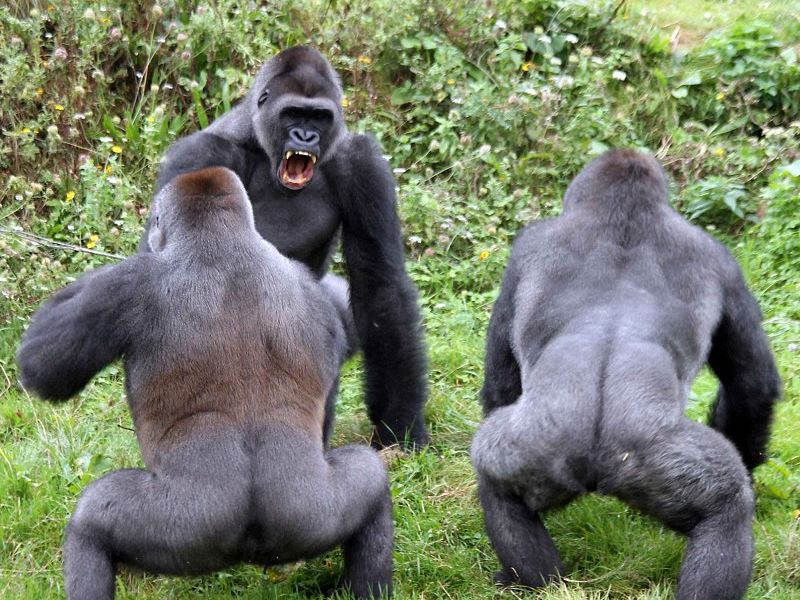
a fight for dominance among the gorillas
Once a new silverback takes over, he needs to establish his authority. This involves leading the group to food sources, making decisions on when and where to move, and protecting the group from threats. The new silverback must build and maintain strong social bonds within the group. Grooming, play and social interactions help solidify his position as the leader.
The silverback must continuously protect the group from predators, rival gorillas and other threats, demonstrating his ability to ensure their safety and well-being because most females would prefer to stay with males that protect them. A strong and healthy male is more likely to successfully challenge and take over as the dominant silverback.
Its only the dominant silverback that is allowed to mate the females in the group however the other males can do that in secret though in case they are found or discovered by the dominant silverback, they can be punished or ex-communicated from the family.
How many females do the majestic silverback mountain gorillas marry?
The majestic silverback mountain gorillas don’t marry like humans, but they do form strong bonds with multiple females in their group. A dominant silverback can lead a group that includes several females, sometimes as many as 3 to 15.
These females form the core of the group, along with their offspring. A large family is a sign of strength, good care and security to other gorilla family and such large family is rarely attacked by others because its chances of winning the challenge is too high that’s why most silverbacks grab females from other families into their family.
The majestic silverback mountain gorillas role is to lead, protect, and provide for his group, ensuring their safety and cohesion.
How large can the majestic silverback mountain gorillas family be?
The majestic silverback mountain gorillas families or troops, vary widely in size and structure, with families typically ranging from 5 to over 30 members. Some families have as few as 5-6 members. These smaller groups usually consist of a silverback, a few females and their offspring.
More common, medium families range from 10 to 20 members, providing a balanced dynamic within the group. In rare cases, families can exceed 30 members. These large families offer a rich social structure, often with multiple silverbacks and many offspring.
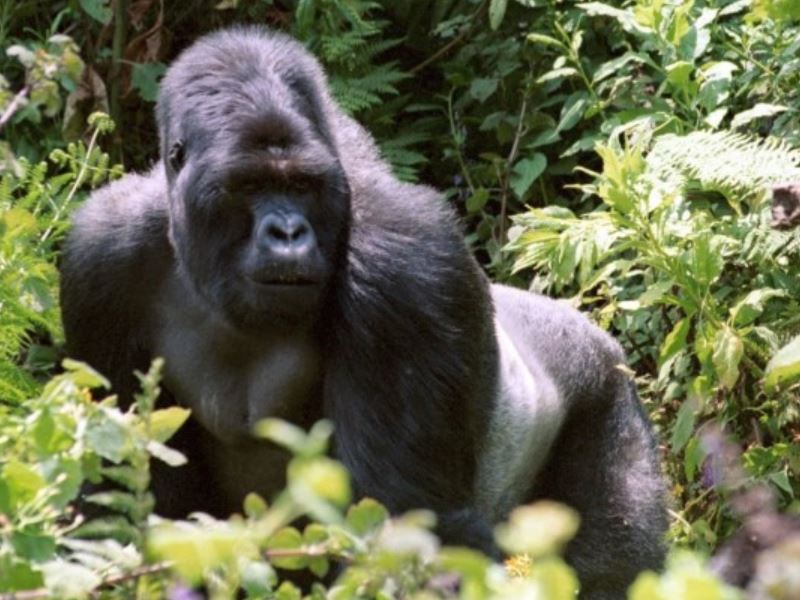
silverback gorilla
Susa Family (Rwanda): Once one of the largest, this family in Volcanoes National Park is famous for its twins and can have over 30 members at its peak. Nkuringo Family (Uganda): Known for its strong silverback and typically has around 12 members. Located in the Nkuringo sector of Bwindi Impenetrable National Park. Rugendo Family (DRC): Found in Virunga National Park, this family is notable for its complex social structure and the presence of multiple silverbacks.
However, it is not guaranteed that you can see all the members of the family because the number keep on changing as the day goes by due to new births, death and other members can be taken away to other families after fights between the gorillas.
Where can I see the majestic silverback mountain gorillas?
Best Places to See the majestic silverback mountain gorillas are Bwindi Impenetrable National Park, Uganda. This park is a home to several gorilla families, including Nkuringo, Kuntu, Nshongi and Busigye family. It offers gorilla trekking experiences where you can observe these magnificent creatures up close.
Mgahinga Gorilla national park in Uganda is also another amazing place. The park encompasses three inactive volcanoes; Mount Muhabura, Mount Gahinga and Mount Sabyinyo.These peaks offer breathtaking hiking opportunities and stunning views.
Mgahinga is home to mountain gorillas with around 30 individuals split between one habituated group and two unhabituated groups. Gorilla trekking here is a unique and intimate experience. The park is also one of the few places where you can track the endangered golden monkeys, adding another exciting trekking option.
Volcanoes National Park in Rwanda Located in the Virunga Mountains, this park is another prime location for gorilla trekking. It hosts several gorilla families, each with a unique name and history. Virunga National Park, Democratic Republic of Congo also offers gorilla trekking opportunities, but it’s important to check the current political situation and safety conditions before planning a visit.
You will need a gorilla trekking permit, which helps fund conservation efforts. Prices vary by country, with Uganda offering permits at around $800 for Non foreign resident, $700 foreign residents, $500 Rest of Africa and 300,000 for East African citizens and Rwanda at around $1,500 for international tourists, $200 for East Africans and $400 in Congo. You can as well do your booking to any of the countries for tracking using a reputable tour company such as beyond sight safaris




